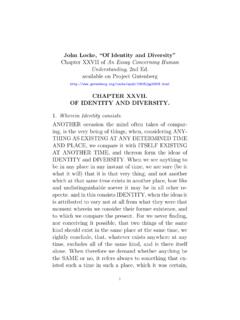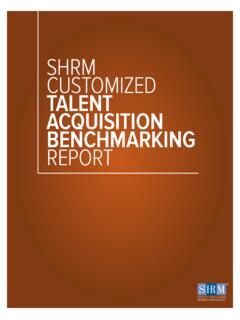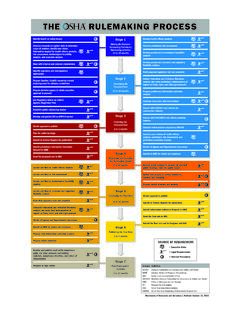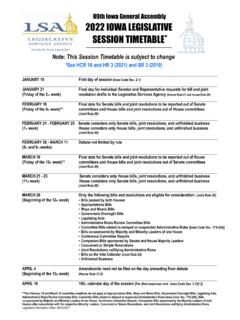Transcription of What is Evidence, and What It Takes to Prove Discrimination
1 Office of Equity and Diversity 204 University Hall Phone 419-372-8472 Bowling Green, OH 43403-0020 Fax 419-372-9533 What is Evidence, and What It Takes to Prove Discrimination There are many things that happen on the job that are unkind, unpleasant, unfair, or downright insulting! Sometimes these things happen because of poor management, or even because someone is mad at, or dislikes, someone else. If something like this has happened to you, it may or may not be unlawful. An employment decision made by your employer can be unfair, and not be unlawful. An employment decision can be based on false information, or false assumptions, and not be unlawful.
2 An employment decision can fail to comply with a union contract, or the employer's own policies, and not be unlawful under any of the laws enforced by EEOC. By providing you with the information that follows, EEOC does not expect you to become an expert on proving Discrimination or personally provide all of the evidence needed. Nor do we claim that the information contained in this document provides an adequate basis for assessing every conceivable factual circumstance, or legal interpretation. However, we do believe you should know that there are certain standards of proof that must be met before it can be concluded that the law was violated.
3 The information is presented to you so that you will have some understanding of, and appreciation for, the type of information that EEOC would need in order to Prove that you have been discriminated against. The standards of proof that EEOC requires are those that have been established by regulation and by the courts in suits involving employment Discrimination . Because the laws prohibiting Discrimination against individuals because of sex, race, national origin, color, religion, and age are somewhat different from he law prohibiting Discrimination against qualified individuals with a disability, there are a few differences in the type of evidence required.
4 The following discussion is broken down into two categories: One discussing the evidence requirements for sex, race, national origin, color, religion and age, and the other discussing evidence requirements for disability. A. SEX, RACE, NATIONAL ORIGIN, COLOR, RELIGION, AND AGE In order for an employment action to be unlawful under either Title VII of the 1964 Civil Rights Act or the Age Discrimination in Employment Act, that action much have been taken because of your sex, race, color, national origin, religion, or age. In order to show that something happened to you because of your sex, race, etc.
5 , it is not enough to simply say, "Well, I am a female, and I was not promoted, therefore, I must have been denied promotion because of my sex, female." Nor is it enough to say, "I am a female, and a male was given the promotion, therefore, I must have been denied the promotion because of my sex, female." There must be some additional, independent factor that could be pointed to in order to show that your sex was a consideration in your employer's decision to deny you the promotion. Office of Equity and Diversity 204 University Hall Phone 419-372-8472 Bowling Green, OH 43403-0020 Fax 419-372-9533 The most common way of showing that the action taken against you was because of your sex, race, age, etc.
6 , is to look at how other people of a different sex, race, etc., were treated who work under the same rule requirements as you. If something happens to you that does not happen to a person of a different race, sex, etc., or if that person was treated more favorably than you, that may be a matter for concern - but standing alone, it is not enough to Prove that the person was more qualified than you. If you were disciplined and someone of a different sex, race, etc., was not, it may be that you violated the employer's rules, and the other person did not. Difference in treatment is not unlawful if there was some legitimate, nondiscriminatory reason for that difference in treatment.
7 Before EEOC can conclude that you were discriminated against, it would need to have proof that: 1. You were treated differently than someone of a different sex, race, national origin, color, religion, or age. EEOC will ask what you know about the person whom you believe was treated more favorable than you. You should be able to provide the person's name, their race, sex, approximate age, or other appropriate characteristic related to the legal coverage. You should know were they worked, who their supervisor was, and the job they did. You should also be able to tell EEOC how they were treated as compared to you.
8 This is particularly true if you were on the job for quite awhile. If you were on the job only briefly, or if you were simply applying for a job, you may have less information. However, the more information you have, the better. 2. Someone who is very similar to you in position, rank, or job duties, and who is of a different sex, race, etc., was treated more favorable under similar circumstances. When looking at the person you believe was treated more favorably than you, EEOC will want to know whether that person worked under the same rules and regulations that you did.
9 For example, did they work for the same company, the same division, the same department, the same supervisor? Did they do the same job that you did? Did they do a similar job, or a completely different job? Did they perform their work under similar physical conditions, such as in the office, outside in the plant? Were they a member of a union, while you were not, or the other way around? Were they a member of management, while you were not, or the other way around? How long had they been on the job as compared to you? Did they have more experience than you? 3. That there was no legitimate, nondiscriminatory reason why the employer treated you differently.
10 Once you have identified the person whom you believe was treated more favorable than you, EEOC will then want to know whether there may have been some reason other than sex, race, color, national origin, religion, or age that might have caused the employer to treat this person more favorably. For example, was Office of Equity and Diversity 204 University Hall Phone 419-372-8472 Bowling Green, OH 43403-0020 Fax 419-372-9533 the person treated more favorably because they earned the right to be treated more favorable, such as having higher ratings than you, or possessing more qualifications, or having more experience on the job than you?


















